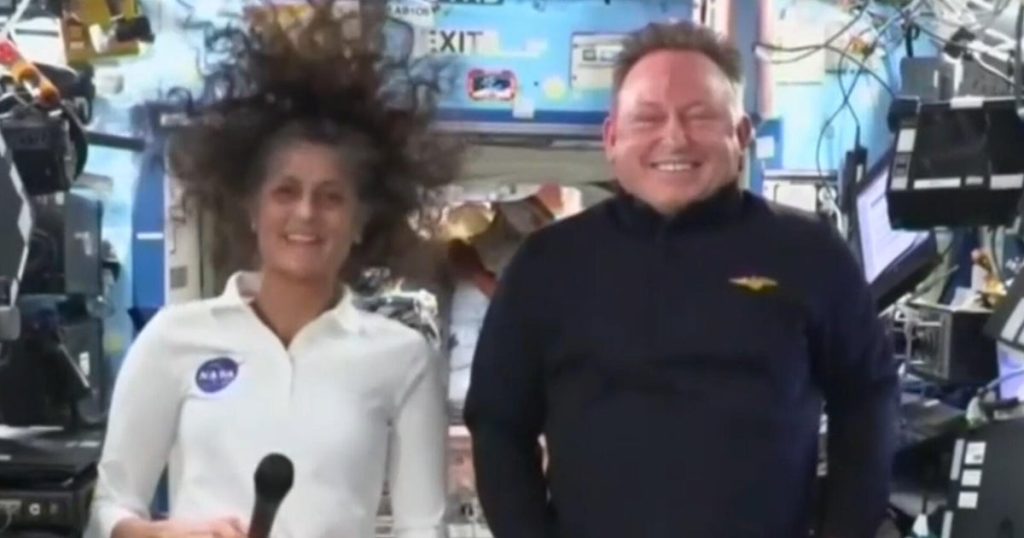Astronauts Butch Wilmore and Sunita Williams made headlines with their unplanned extended stay aboard the International Space Station (ISS), breaking the initial eight-day mission and remaining in space for a remarkable nine-and-a-half months. Now back on Earth, they are set to hold a news conference to discuss their extraordinary experience and the challenges they encountered during their time in orbit. This unprecedented duration in space has drawn significant attention not only due to the inherent difficulties of their mission but also because of the technical issues faced by their Boeing Starliner spacecraft, which ultimately led to their extended stay.
| Article Subheadings |
|---|
| 1) Astronauts’ Return to Earth After Extended Stay |
| 2) Challenges of the Extended Mission |
| 3) Technical Issues with the Starliner |
| 4) Upcoming News Conference: What to Expect |
| 5) Future Space Missions and Crew Dynamics |
Astronauts’ Return to Earth After Extended Stay
After an impressive 286 days spent aboard the International Space Station (ISS), astronauts Butch Wilmore and Sunita Williams have safely returned to Earth. They splashed down successfully off the coast of Florida after being launched aboard a SpaceX Crew Dragon vehicle on March 18. The astronauts are now undergoing rehabilitation at the Johnson Space Center in Houston to reacclimate to Earth’s gravity after spending such an extended time in microgravity. The emotional weight of their journey and the scientific achievements they accomplished during their stay is expected to be a focal point of their upcoming press conference.
Challenges of the Extended Mission
The unusually long stay for Wilmore and Williams presented several psychological and physical challenges. The initial plan was to remain for just eight days, yet as they reached their landmark 286th day in orbit, both astronauts demonstrated remarkable adaptability. They engaged in numerous experiments, contributing significantly to ongoing scientific research aboard the ISS, including studies on human health and materials sciences in microgravity. Upon returning, Williams emphasized her pride in contributing to “world-class science” during their tenure, despite facing the challenges of isolation from Earth and a prolonged absence from family and friends.
Technical Issues with the Starliner
The mission’s extension was largely influenced by technical difficulties with the Boeing Starliner spacecraft. Initially launched on June 5, the spacecraft encountered several technical malfunctions shortly after launch, which prevented a timely return before the planned eight days. Problems included leaks in the helium propulsion system and underperforming maneuvering jets, compelling NASA officials to prioritize passenger safety, ultimately leading to a decision to keep the astronauts onboard the ISS until a reliable return could be ensured. The issues with the Starliner have sparked significant public interest, raising questions regarding the reliability of the spacecraft and the future of Boeing’s spaceflight program.
Upcoming News Conference: What to Expect
On March 30, 2025, at 2:30 p.m. EDT, Wilmore and Williams will conduct a news conference at the Johnson Space Center, offering reporters the opportunity to hear directly about their experiences. They will likely touch on their feelings during the prolonged mission, the scientific work they conducted aboard the ISS, and their immediate post-return health and rehabilitation. The public can expect to watch this conference online on various platforms, providing a chance for more people to connect with the astronauts’ extraordinary journey and grappling with their unexpected extension in orbit.
Future Space Missions and Crew Dynamics
Looking ahead, the extension of Wilmore and Williams’ mission poses vital implications for future space exploration. With Boeing and SpaceX now both actively involved in the task of ferrying astronauts to and from the ISS, the space community is under renewed scrutiny concerning safety and reliability. Additionally, Wilmore and Williams’ experiences may provide valuable insights into crew dynamics during extended missions in space, particularly regarding mental health and operational effectiveness. As NASA gears up for future missions, understanding how astronauts cope with extended periods in space will be crucial for upcoming endeavors, including missions aimed at reaching Mars.
| No. | Key Points |
|---|---|
| 1 | Astronauts Butch Wilmore and Sunita Williams spent 286 days aboard the ISS due to unexpected technical issues with the Boeing Starliner. |
| 2 | They engaged in a variety of scientific research projects while in orbit, contributing to advancements in multiple fields. |
| 3 | NASA prioritized astronaut safety over an earlier return, opting to keep them aboard the ISS until a reliable exit route was confirmed. |
| 4 | A news conference will be held to discuss their experience and challenges faced during the prolonged stay in orbit. |
| 5 | The incident raises important questions about future space missions, crew dynamics, and the reliability of space vehicles. |
Summary
The remarkable journey of astronauts Butch Wilmore and Sunita Williams underscores both the triumphs and challenges of human spaceflight. Their extended stay aboard the ISS due to technical setbacks with the Boeing Starliner has not only generated significant media attention but has also opened discussions on the future of crewed space missions. As they prepare to share their experiences in an upcoming press conference, the lessons learned from their mission will undoubtedly shape the narrative of space exploration moving forward.
Frequently Asked Questions
Question: What caused the astronauts’ extended stay in space?
The astronauts’ extended stay was primarily due to technical issues with the Boeing Starliner spacecraft, which included propulsion system leaks and maneuvering jet failures, prompting NASA to prioritize their safety and extend their mission aboard the ISS.
Question: How long did Wilmore and Williams spend in space?
They spent a total of 286 days in space, which significantly exceeded their original mission plan of eight days, earning their journey a place among the longest crewed missions in U.S. history.
Question: What is expected during the news conference?
The news conference will likely cover their feelings about their extended mission, the scientific contributions made during their time in orbit, and insights into the challenges faced while adapting back to life on Earth.


